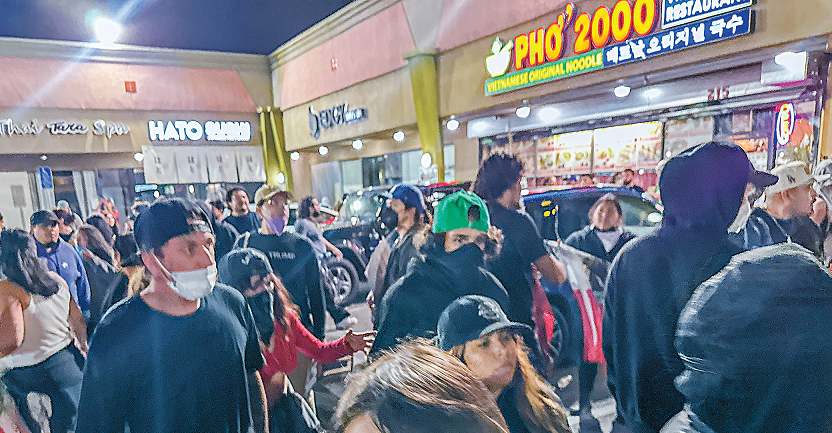On the night of June 11, protesters opposing immigration enforcement entered Koreatown in Los Angeles, raising alarm among Korean American residents and business owners. Protesters were redirected from Downtown LA due to enforcement of a citywide curfew, and LAPD barricades were installed in Koreatown—sparking anger from a community still scarred by the 1992 riots.

The Los Angeles Police Department (LAPD) confirmed that it placed barricades in Koreatown to prevent protesters from advancing toward West LA. But Korean American residents questioned why police chose Koreatown—several miles west of Westlake, which is closer to the protest’s origin—as the containment zone.
Business owners who lived through the April 29, 1992 riots voiced fears that history might repeat itself. Witnesses reported dozens of police vehicles tailing demonstrators as they moved toward Koreatown. The area around Wilshire Boulevard and Western Avenue, where police set up the first barricade, was one of the frontlines of the 1992 unrest, defended at the time by armed Korean American patrols.
In response, Korean American organizations and residents began mobilizing on June 12 to demand action from City Hall and LAPD. Community leaders and business owners are exchanging messages and making calls to coordinate a formal response.
Chang-Yeop Lee, incoming president of the LAPD Olympic Booster Association (OBA), told The Korea Daily that he understands the growing concern. “As someone who directly experienced the 4/29 riots, I fully understand Korean Americans’ concerns,” he said. “I’ve asked the LAPD’s West Bureau to move the barricade outside of Koreatown. The department is aware of the community’s worry.”
In response to inquiries from The Korea Daily, the LAPD Public Information Office said the decision to use Koreatown was “a fluid, situational judgment based on real-time conditions.” However, the department did not explain why no barricades were initially installed in Westlake or why Koreatown was chosen instead.
A spokesperson from Los Angeles Mayor Karen Bass’s office said on June 12 that the mayor “empathizes with the pain the Korean American community experienced in the past.” The statement added that the city is closely monitoring protest activity and has increased police patrols within Koreatown.
The LAPD first installed barricades around 9:40 p.m. on June 11 at the intersection of Wilshire Boulevard and Western Avenue. As protesters moved north along Western Avenue, officers set up a second line near Beverly Boulevard. The confrontation ended about an hour later without reported violence.
Tensions have continued to mount after Donald Trump Jr. posted an image online showing armed Korean American patrols during the 1992 riots. The post has fueled anxiety among Korean Americans who worry the community may again be drawn into larger political conflicts.
BY KYEONGJUN KIM [kim.kyeongjun1@koreadaily.com]
AND HANKIL KANG [kang.hankil@koreadaily.com]




